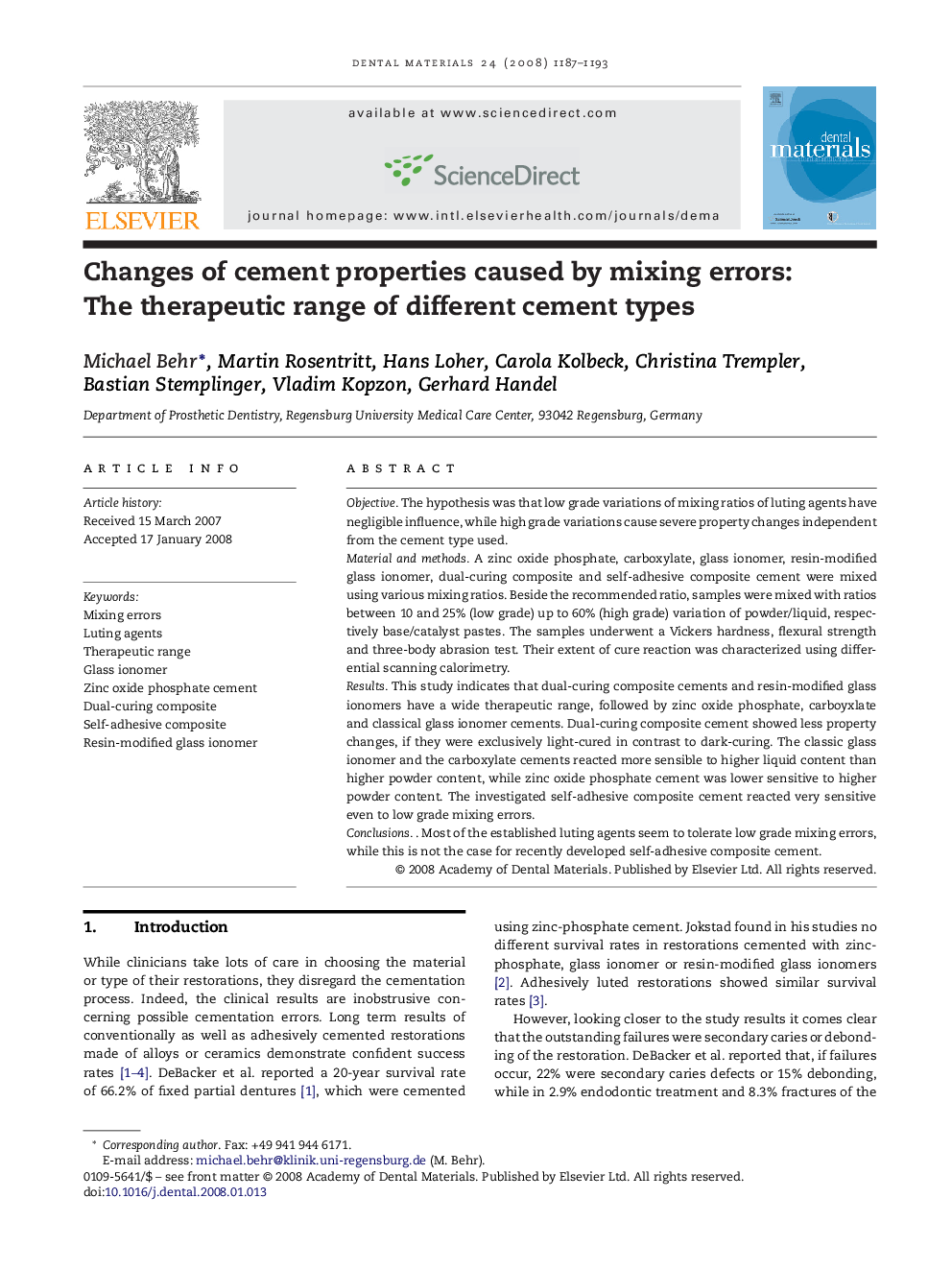| Article ID | Journal | Published Year | Pages | File Type |
|---|---|---|---|---|
| 1422536 | Dental Materials | 2008 | 7 Pages |
ObjectiveThe hypothesis was that low grade variations of mixing ratios of luting agents have negligible influence, while high grade variations cause severe property changes independent from the cement type used.Material and methodsA zinc oxide phosphate, carboxylate, glass ionomer, resin-modified glass ionomer, dual-curing composite and self-adhesive composite cement were mixed using various mixing ratios. Beside the recommended ratio, samples were mixed with ratios between 10 and 25% (low grade) up to 60% (high grade) variation of powder/liquid, respectively base/catalyst pastes. The samples underwent a Vickers hardness, flexural strength and three-body abrasion test. Their extent of cure reaction was characterized using differential scanning calorimetry.ResultsThis study indicates that dual-curing composite cements and resin-modified glass ionomers have a wide therapeutic range, followed by zinc oxide phosphate, carboyxlate and classical glass ionomer cements. Dual-curing composite cement showed less property changes, if they were exclusively light-cured in contrast to dark-curing. The classic glass ionomer and the carboxylate cements reacted more sensible to higher liquid content than higher powder content, while zinc oxide phosphate cement was lower sensitive to higher powder content. The investigated self-adhesive composite cement reacted very sensitive even to low grade mixing errors.Conclusions. Most of the established luting agents seem to tolerate low grade mixing errors, while this is not the case for recently developed self-adhesive composite cement.
